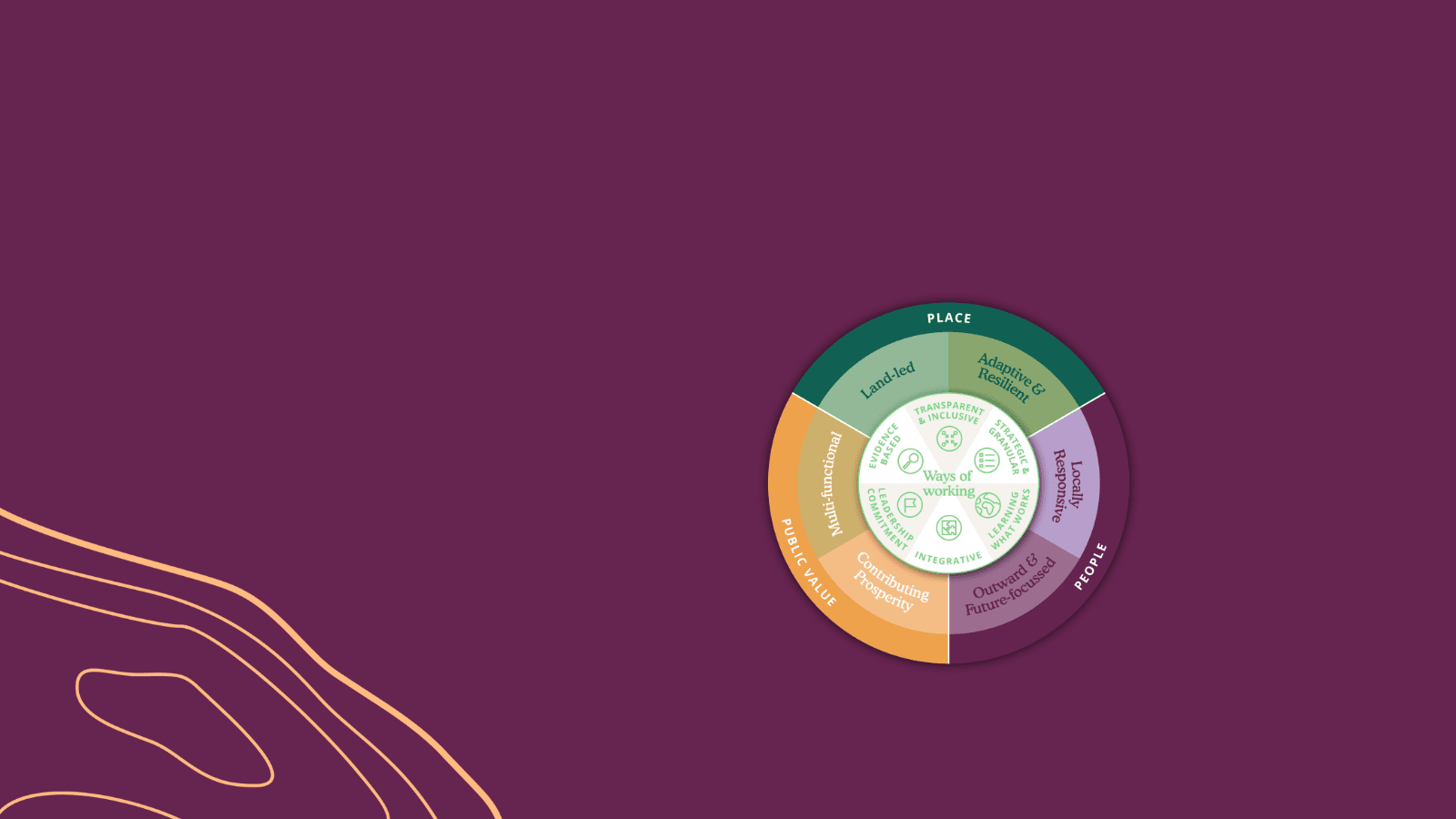

Defra published the Consultation on Land Use on the 31st January 2025, which lasted 12 weeks. The Consultation sought feedback from land use decision makers at different scales to understand how to shape land use policy to be most effective.
Drawing on our work piloting Land Use Frameworks and subsequently building a community of practice, FFCC submitted evidence to the Consultaton. In addition to this, FFCC were commissioned by Defra to run four workshops in Cambridgeshire, Cumbria & Northumberland, Devon and Gloucestershire to support the Consultation process. These workshops were designed to understand what land managers and decision-makers from a wide range of sectors wanted to see in a Land Use Framework. Read the findings from the workshops here.
The Rough Guide brings together insights and learning from FFCC's
work developing and testing a Multifunctional Land Use Framework.
Our work is informed by on-the-ground experience from two pilot
programmes in Devon and Cambridgeshire and conversations with farmers,
landowners and local communities, policymakers and other experts.
Reports and explainers available through links to the right
The Multifunctional Land Use Framework is a practical process that supports better, more sustainable decisions about land, by all those who need to make them, including local and national government, businesses and communities.
Our work testing this process shows it works best based on a set of principles and practices to align top-down and bottom-up priorities, mediate competing pressures and encourage multifunctionality. It can also bring together key data and expertise, and spatial mapping tools, to guide leaders through better decision-making, optimising land use for multiple benefits.
Land is a limited resource. The Royal Society estimates that the UK would need additional land twice the size of Wales to meet all the targets set by governments over the last few years.
A Land Use Framework for England is now a widely-accepted solution to these challenges. Our research shows that a Multifunctional Land Use Framework - that allows land to provide multiple benefits - is the most promising way to meet the many demands made on land and optimise delivery of social, economic and environmental objectives.
Wales, Scotland, Northern Ireland (and the Republic of Ireland) are also developing their own land use decision processes. All four are paying attention to the need for strategic and functional interoperability on critical issues at policy, landscape and catchment level.
A Multifunctional Land Use Framework could mean better decisions are made about how land is used – ensuring that new housing is close to public transport, that we grow enough of the healthy food we need, that rivers are clean and flood risks – and droughts – managed, nature is restored, green energy increased, and carbon sequestered – and more.

A Multifunctional Land Use Framework can help navigate diverse and dispersed ownership and responsibilities over land - making it easier for everyone involved at the outset to think strategically and locally; for the long term and for immediate practical needs.

The MLUF can enable you to base decisions on fully cross-sectoral evidence and priorities to try to ensure optimal decisions both for yourselves and for society.
The MLUF can provide benefits in policy delivery, by encouraging proper debate over land use, saving time and money. Collaborative approaches help align and pool resources, share data, knowledge and skills, leading to more sustainable decisions being made.
The MLUF can offer the prospect of considering all aspects of the project at an early stage, aligning stakeholder interests and avoiding the late emergence of issues at the implementation stage.
The MLUF can help direct your energies and local knowledge at an early stage into creative, practical ideas and solutions. It should reduce objections, optimise trade-offs and help avoid unintended or unforeseen consequences.
The MLUF can offer a more certain planning horizon, enabling you to integrate critical questions of food security and resilience in land use decisions.
The MLUF facilitates balanced decision process with other stakeholders which leads to a quicker and more efficient decisions and the right housing in the right locations for sustainability, community, jobs and public services.
The MLUF can provide a more strategic, long-term opportunity for risk assessments, asset values and return on investment calculations.
The MLUF can enable you to base decisions on fully cross-sectoral evidence and priorities to try to ensure optimal decisions both for yourselves and for society.
The MLUF can provide benefits in policy delivery, by encouraging proper debate over land use, saving time and money. Collaborative approaches help align and pool resources, share data, knowledge and skills, leading to more sustainable decisions being made.
The MLUF can offer the prospect of considering all aspects of the project at an early stage, aligning stakeholder interests and avoiding the late emergence of issues at the implementation stage.
The MLUF can help direct your energies and local knowledge at an early stage into creative, practical ideas and solutions. It should reduce objections, optimise trade-offs and help avoid unintended or unforeseen consequences.
The MLUF can offer a more certain planning horizon, enabling you to integrate critical questions of food security and resilience in land use decisions.
The MLUF facilitates balanced decision process with other stakeholders which leads to a quicker and more efficient decisions and the right housing in the right locations for sustainability, community, jobs and public services.
The MLUF can provide a more strategic, long-term opportunity for risk assessments, asset values and return on investment calculations.
In our 2019 report Our Future in the Land, FFCC proposed a Land Use Framework to help improve land use decision-making. Since then, we have produced blogs, briefings, project updates and reports setting out the case for a Land Use Framework with multifunctionality at its heart.
Browse this collection below.
